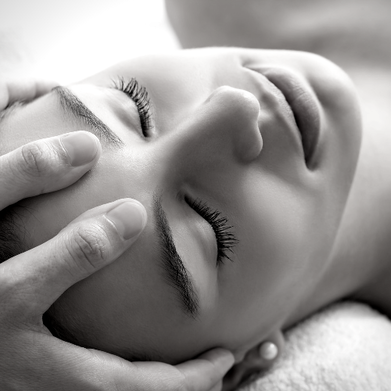|
JOIN OUR
MAILING LIST
|
|
In order to heal your trauma and emotions you have to process it through the body – what is missing in the current cognitive talk therapy model.
A couple of times in my career, I have been vetoed by psychologists and psychiatrists, who advised their clients to work exclusively with them as they process their events, trauma and experiences, on a cognitive level and/or medicate them – dampening their disturbed physiology. Whilst I never met or spoke with their respective therapists and they possibly may not know what craniosacral therapy is, I respect their professional advice and view their advice as a gift. A gift that it is my responsibility to contribute to the education of Craniosacral Therapy for all trauma suffers – developmental, chronic toxic stress, shock trauma - and the medical world. I would like to encourage an open ongoing dialogue in how we can mutually support a Trauma client and the complementary domino effects craniosacral therapy has to talk therapy and vice versa, in a holistic and integrative healing model. I have benefited from talk therapy myself but when it comes to trauma it needs a broader approach. The current model emphasises so much on cognitive functioning without the integration with our bodily experiences. Trauma impacts the body so strongly and the body has often not metabolised its responses, and it can get stuck, repeating the same patterns over and over again. It is through pioneers like Stephen Porges and his Polyvagal theory, Bessel van der Kolk – in the bestselling book the body keeps the score – where he recommends craniosacral therapy, and many other trauma informed practitioners, including my own craniosacral teacher, that hopefully one day the global medical world will play full catch up. Healing trauma and regulating the nervous system by including the body through: Craniosacral therapy – Yes. Trauma Yoga, Breathe work – Yes. Art/Music/ Dance Therapy – Yes. Mindfulness & Meditation – Yes, yes and well of course, yes. The body remembers what your mind forgets. (Martha Manning) Why body-based therapies need to be included – The 4 core reasons:
I thank the psychologists who send their clients to me. The woman with severe pelvic pain due to sexual abuse, who was able to unfreeze and come into the healthy healing response, the woman with chronic pain, a history of trauma and many operations and prescription medications who was able to process and integrate her trauma and come off her opioid addiction and the boy with high anxiety and digestive issues: working with his digestive system on a physical level, down regulating his nervous system out of the anxious state on a physiological level, regulating his emotions that kept his system stuck in a negative feedback loop whilst his psychologist provided coping mechanisms, emotional support, identified triggers and put protective and safety measures in place. The one common denominator that I hear time and time again from all my (trauma) clients is – “I thought I had processed my experiences and memory but it is not until I engaged with my body through craniosacral therapy that I realise that is not the case”. Through Craniosacral therapy, firstly clients regulate their fight and flight nervous system, so important to address anxiety and hyper aroused brains, secondly in the right environment - clients literally come out of their biological freeze response (imperative to heal) as they process their experience and emotions on a bodily level – they often feel so cold after the treatment, bone cold and thirdly in a very safe and contained way - memories or insights may come up that they were not aware of, as we tap into the subconscious mind, bypassing the logical thinking mind. Cranio is not a one-off miracle session, it is very much therapy. Craniosacral therapy is absolutely gaining in anecdotal evidence on an ever-increasing scale, being written about in trauma, psychology and healing literature and also gaining in scientific evidence with more advanced measurement techniques made available. I would love to be wired up or for my clients to be wired up and measure their brains, track their nervous system, their heart rate variability, their muscle tone, tissues, their nerves, cortisol and adrenaline levels before and after a Craniosacral session. This week I treated a man with a severe flare up of his colitis. The client is very body aware, has a great sense of interoception and is working with a trauma therapist on his developmental trauma. The client was able to feel every change that happened in his body whilst I was working on him – he could feel the facilitated nerve in his digestive system switch off, he could feel his diaphragm open, his muscles coming out of hyper tonus, his nervous system go into total healthy parasympathetic state, lowering the inflammation response, his brainwaves enter subconscious mode and as icing on the cake, he was able to make some important and crucial realisation why his colitis had flared up. We were so attuned. After 3 treatments and with his own ongoing work, his colitis was back in remission. We joked at the end of our session, that I wished I had a camera on my fingertips that could go through the skin of his body and project what I feel, “see” and how the body responds to the craniosacral touch. We imagined those images projected onto the wall of a classroom or trauma conference, as Craniosacral is not necessarily a spectator sport as little seems to happen on the outside but yet So much is happening on the inside, on a brain, body and nervous system level. Open to anyone who would like to fund me and these scientific measurements in the advancement of craniosacral therapy, trauma and nervous system work. ____ Below some heart felt Google reviews from my Trauma clients: Enough said. Processing Trauma - through the BODY I was suffering from involuntary muscle movements & cognitive short circuiting. My doctor found nothing wrong with me; sadly, not all health professionals are trauma informed. Thankfully Dorine not only has a deep understanding of processing trauma through the body derived from her training; she also has an unconditional acceptance and care derived from her experience. This enabled me to feel safe & comfortable, even when I was highly agitated before I walked in the door. I am not usually one to post reviews. I write this for those going through a similar experience to let them know, “you have come to the right place”. Dorine’s help has been invaluable; her treatments are non-invasive yet powerful. And there is absolutely no need to feel self-conscious about your symptoms, I think she has seen it all. My mind, body and life are back on track now, I am forever grateful. _____ I came to see Dorine at the recommendation of my Integrative GP and I'm SO glad my GP told me about her.... I had been struggling with chronic fatigue and was having a lot of difficulty in getting my nervous system to calm down.. My experiences with Dorine have been game changing for my emotional, physical and mental health. With her grounding and nurturing support I was able to FINALLY process and move through traumatic experiences that I had blocked and stored in my body- that talk therapy just couldn't quite help me with to the same degree...Dorine has a way of making you feel so safe and so seen so you can really let go and let out what you have been storing in for years...sometimes decades. Whilst you can move through big stuff, you dont leave the session feeling worse (as you sometimes you do with certain therapies) I always find I feel 100 times better and far calmer...like I can breathe more deeply. More GP's should be recommending this kind of treatment for people with trauma and who have nervous systems that need support in learning to feel safe.
0 Comments
Leave a Reply. |
AuthorDorine Siccama.com Archives
August 2023
Categories |


 RSS Feed
RSS Feed